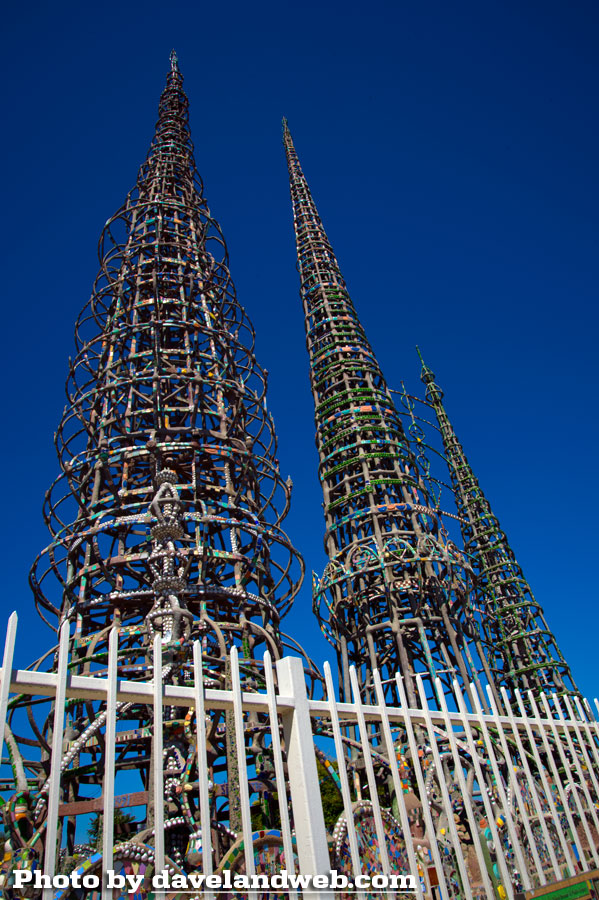
Another bucket list item was crossed off when I finally made it to The Watts Towers in Los Angeles. Designed and built by Italian immigrant construction worker and tile mason Sabato Rodia, over a period of 33 years, from 1921-1954, this wacky collection of towers made of steel, concrete, porcelain, tile, and just about everything besides the kitchen sink has always fascinated me…from photos. I was excited to experience them in person.
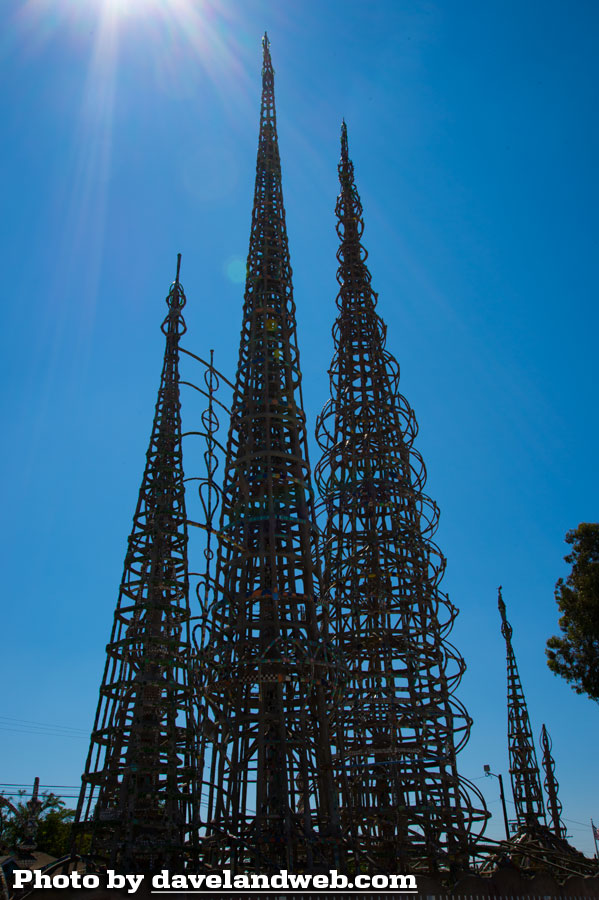
In 1955, Rodia 'quit claimed' his property to a neighbor and left, frustrated from battling the city for permits. He moved to Martinez, California and never returned, passing away ten years later.
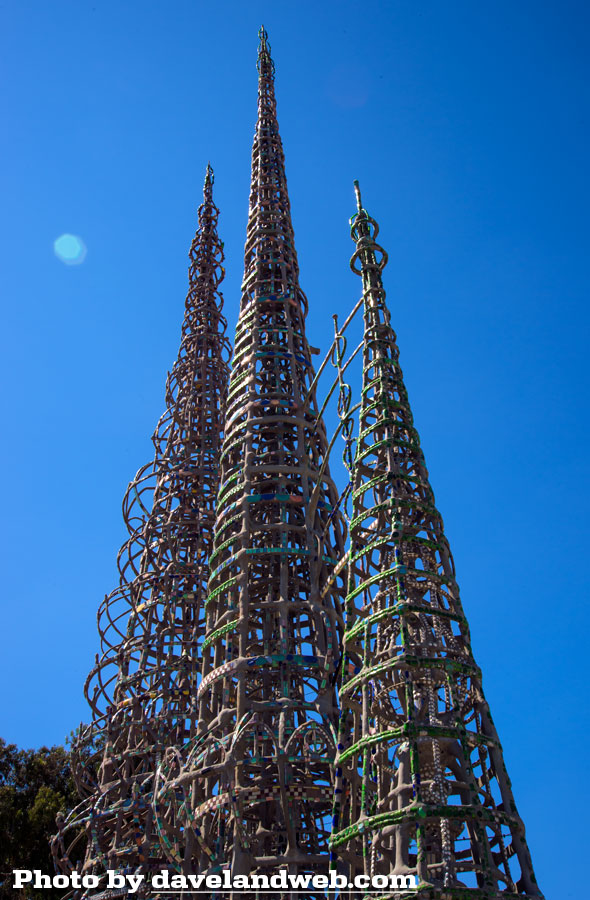
I have to admit I was slightly disappointed when I saw them. For some reason, I expected there to be more land around them, but they are smack dab in the middle of a residential neighborhood. I also didn't expect them to be fenced in, especially by a fence that is very closely constructed to the towers themselves. Still, I do understand the need for the fence, as otherwise this amazing piece of architecture would probably not survive the threat of vandalism.
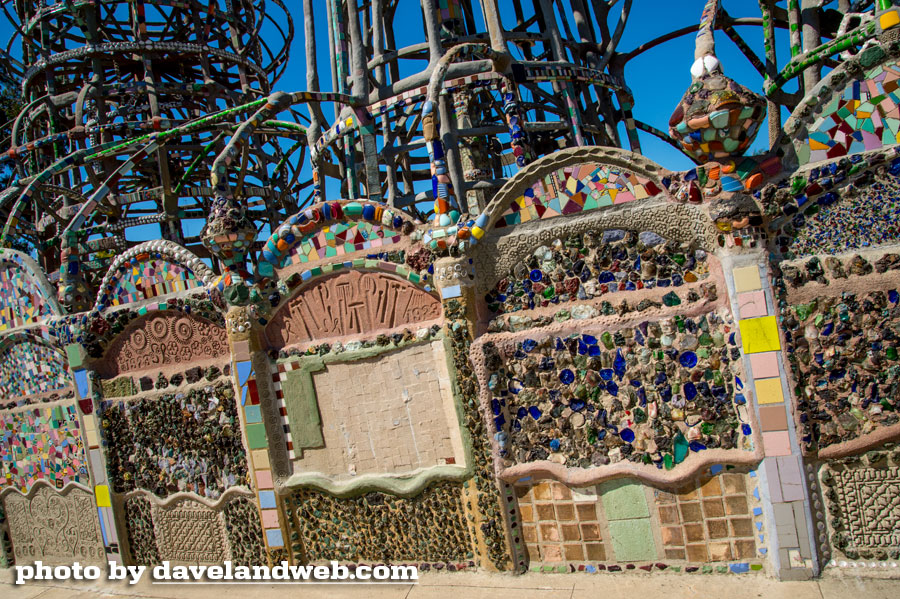
When Rodia's bungalow inside the towers was burned down, the City of Los Angeles condemned the structure and ordered it to be destroyed. Actor Nicholas King and film editor William Cartwright purchased the property in 1959 for $2,000 in order to preserve it. King, Cartwright, architects, artists, enthusiasts, academics, and other community activists formed the 'Committee for Simon Rodia's Towers in Watts,' negotiating with the city to allow for an engineering test to establish the safety of the structures and avoid their demolition.
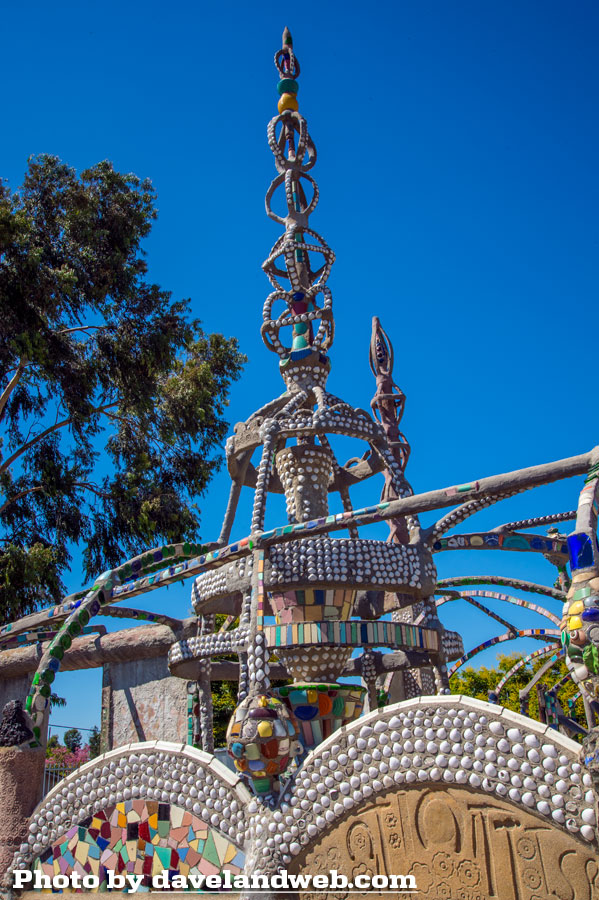
On October 10, 1959, steel cable was attached to each Tower and a crane was used to exert lateral force all connected to a 'load-force' meter. Unable to topple or even shift the Towers with the forces applied, the test was concluded when the crane experienced mechanical failure. As a result, the Towers have served as an influence for stability and endurance in architecture. Not bad for an unsafe condemned structure!
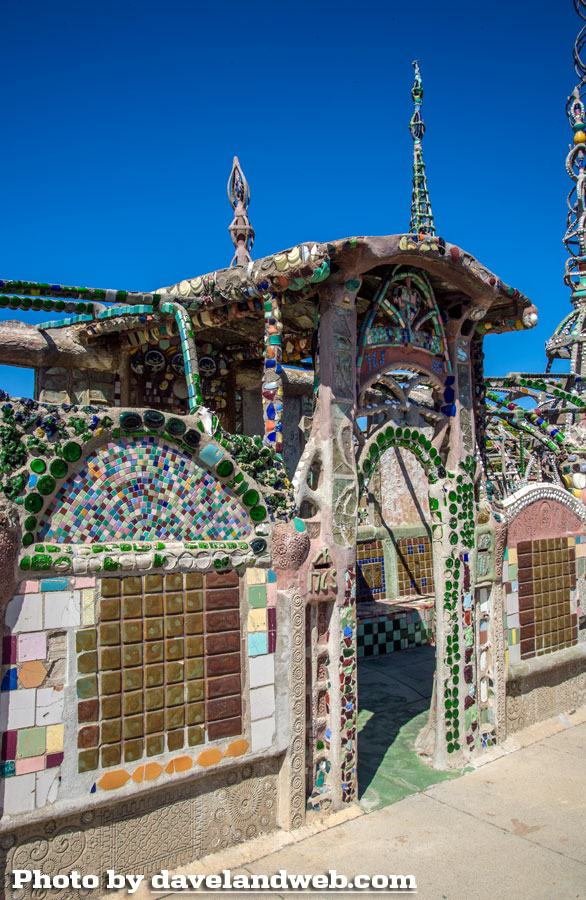
The Committee preserved the Towers independently until 1975 when they partnered with the City of Los Angeles, who then partnered with the State of California in 1978. They are now operated by the City of Los Angeles Cultural Affairs Department and curated by the Watts Towers Arts Center/Charles Mingus Youth Arts Center.

I didn't have time to take the tour, so that still remains on my bucket list.
As a follow-up to yesterday's post, here are photos of Walt Disney World's homage to the Cross Roads of the World in Hollywood:
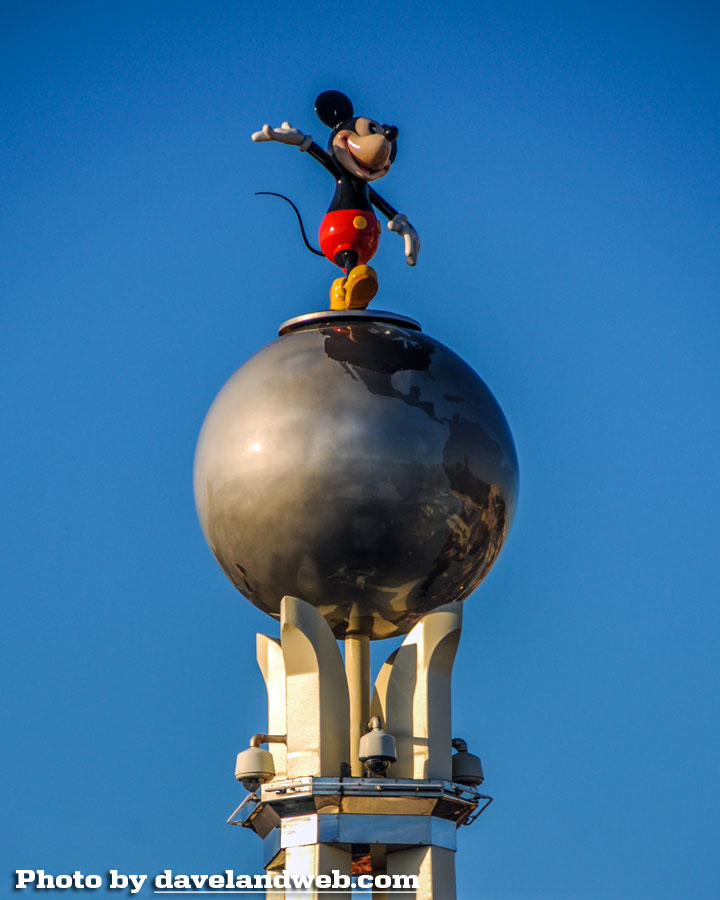
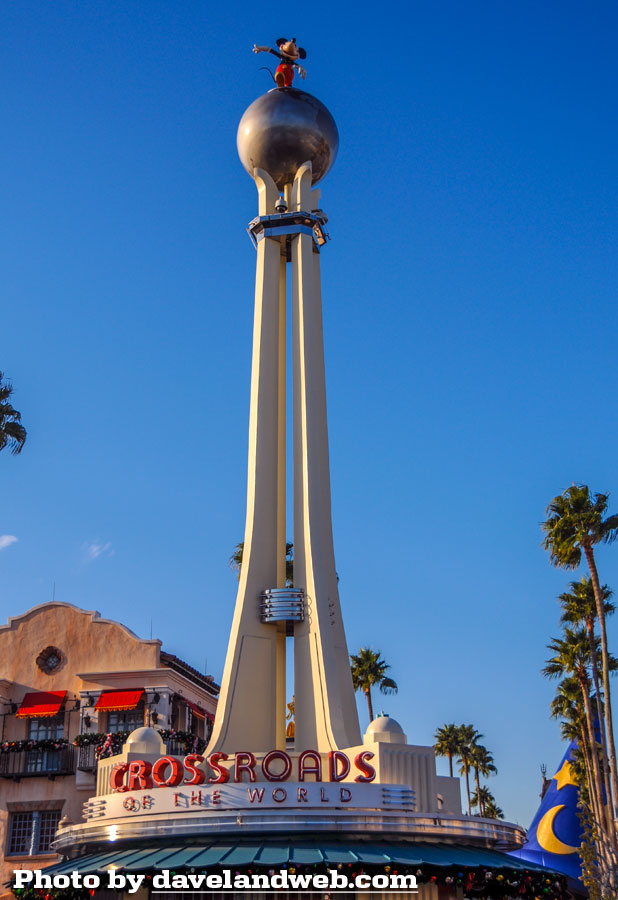
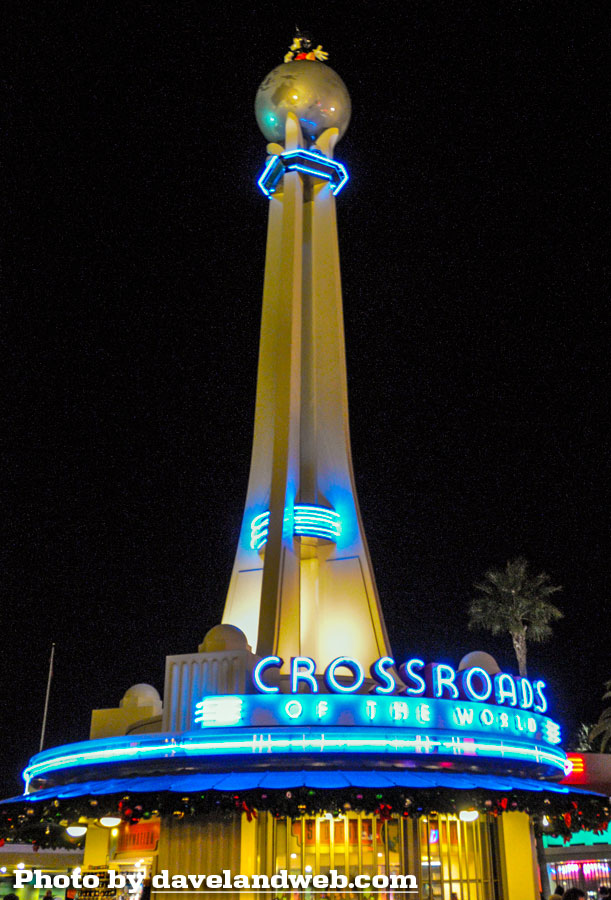
See more Daveland Watts Towers photos at my main website.

The Watts Towers are so cool. Parts of it remind me of Spanish architect Antoni Gaudi's work. Nice post today. Thanks, Dave.
ReplyDeleteI remember well when Rodia was still living there and we would go over to see what he was doing - he was always puttering with little repairs and upkeep - he didn't talk to those gathered to look on. He accepted donations of shells and china and we always took him some things when we visited and put them into the donation box. The place was not fenced off then but there were lots of KEEP OUT signs. There is a place tho on a smaller scale that reminds me a lot of these in Cambria, Cali - Nitwit Ridge - Art Beal lived there for years and cemented a lot of things into his terraced home he built out of you name it! I have been inside the latter in the early 70s when he was still alive and working on it, given a personal tour by Art himself (what a character) - it's worth a look-see when you are up along the Central Coast area.
ReplyDeleteI have been fascinated by this sculpture, but never enough to go see it.
ReplyDeleteThanks for the update, Dave. Good to hear that they are still in place.
JG
I'd heartily recommend taking the tour if you ever get a chance. The towers are certainly striking on their own, bit with the tour, you get a great appreciation of the story and effort it took to build them.
ReplyDelete